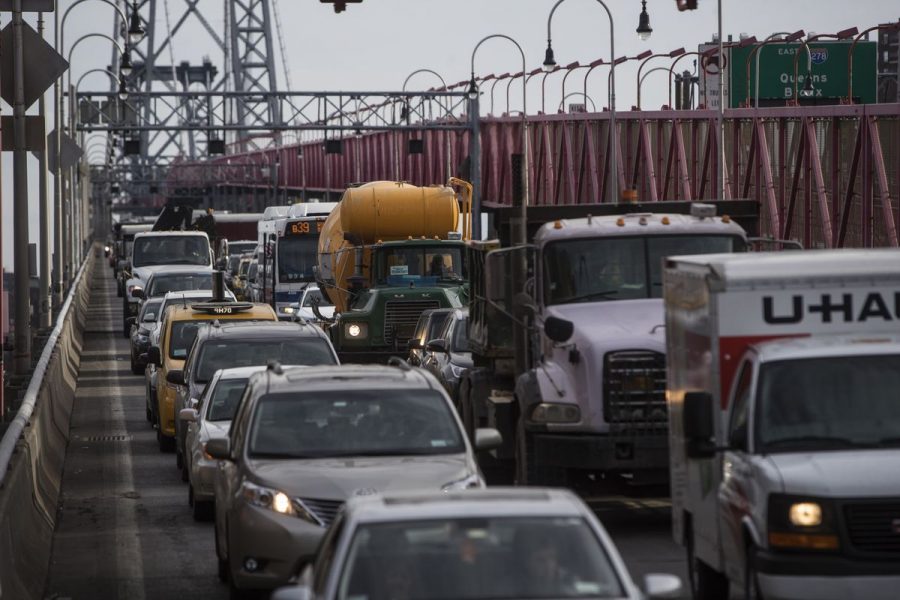Cuomo’s Proposed Driving Tax Poses Impacts to Students, Faculty
Governor Andrew Cuomo has proposed a driving tax applicable in areas of high traffic congestion in New York City. If passed, a pricing zone would be established affecting NYU’s Washington Square campus.
January 25, 2018
The New York legislature will vote on a driving tax proposal to combat New York City’s traffic congestion on Jan. 26. If passed, drivers will be charged up to $11.52 when driving in high-congestion areas of Manhattan, and those hailing taxis or transportation services such as Uber would face a surcharge of $2 to $5 per ride.
The congestion pricing plan was proposed by Governor Andrew Cuomo in hopes of relieving New York’s severe traffic congestion and raising revenue to improve the city’s deteriorating subway and bus transit systems.
If Cuomo’s tax plan passes, Manhattan below 60th Street will be placed under a pricing zone, which will impact NYU’s Washington Square campus. Vehicles passing through this zone would be tracked and automatically charged by newly developed technology.
As of now, Midtown roads are jammed with mass construction projects, crowded bike lanes and an influx of ride-hailing service vehicles such as Uber and Lyft. Midtown traffic was reported to now crawl at an average of 4.7 miles per hour.
Mary W. Quigley, clinical professor of journalism and acting director of undergraduate studies, recounted her experience of driving to and from campus.
“One night I was sitting in traffic on my way home and wasn’t moving, and I realized that I was the only car that wasn’t a delivery vehicle like an Uber or Lyft,” she said. “They have just overwhelmed the city and it’s just now impossible [to drive]. Many people I know who used to drive won’t anymore because of the congestion and it just takes so long and you can sit there endlessly.”
While Cuomo has declared a state of emergency for New York’s critical traffic situation, he has been met with resistance from Mayor Bill de Blasio regarding who the tax would affect. De Blasio argued that the tax would be unfair and burdensome for lower-income residents coming from Brooklyn and Queens and expressed wariness over how the money generated from the tax would be used.
Fix NYC — the panel Cuomo appointed to tackle New York’s congestion issue — dismissed de Blasio’s claims, as its tax proposal exempts drivers coming into Manhattan from all but two of the city-owned East River bridges.
There are also worries about the influx of commuters flocking to the already overcrowded subways and bridges once the driving tax takes effect.
“You can’t squeeze another person into the freight trains,” NYU Journalism Clinical Professor and Director Yvonne Latty explained. “What’s going to happen is the motorists who are coming into the city who decide not to drive are going to take the subways, it’s just going to get even worse. So in my opinion, until they fix the subways, they can’t even begin to talk about the topic.”
If passed, the tax will not be implemented until next year, as the panel report states that fees will not be charged until improvements are made to the New York City subway system.
For Tandon freshman and commuter Andrew Surujnarine, these assurances of future subway system maintenance may not be enough.
“I’m sure the [Metropolitan Transportation Authority] has more than enough funding,” Surujnarine said. “But they just don’t have enough time in the day; I think they work mostly at night to fix MTA problems. I think the issue is more time than funding, so I don’t know if a tax is really going to help.”
Email Alesha Bradford at [email protected].



























































































































































